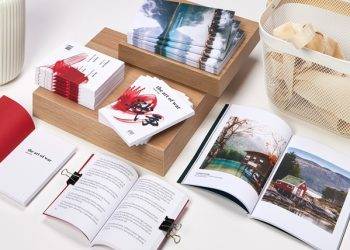Choosing the right turf for your garden is an important decision that can greatly impact the overall look and health of your outdoor space. Turf serves as the foundation of your garden, providing a lush and green carpet that enhances the beauty of your landscape. However, with so many different types of turf available in the market, it can be overwhelming to make the right choice.
This article aims to provide a comprehensive guide to help you understand the different types of turf, factors to consider when choosing turf, the importance of soil quality, how to measure and calculate the amount of turf needed, the benefits of high-quality turf, how to prepare your garden for turf installation, tips for laying and maintaining your new turf, choosing turf suitable for your climate, the role of budget in selecting turf, common mistakes to avoid, and final tips and recommendations.
Key Takeaways
- Different types of turf include warm-season, cool-season, shade-tolerant, and drought-resistant
- Factors to consider when choosing turf include sunlight, soil type, foot traffic, and maintenance requirements
- Soil quality is important for turf selection as it affects the growth and health of the grass
- To calculate the amount of turf needed, measure the area and add 5-10% extra for trimming and shaping
- High-quality turf offers benefits such as better appearance, durability, and disease resistance.
Understanding the different types of turf available
When it comes to choosing turf for your garden, there are several different types available in the market. Each type has its own unique characteristics and benefits. Some common types of turf include Bermuda grass, Kentucky bluegrass, Zoysia grass, and Fescue grass.
Bermuda grass is a warm-season grass that thrives in hot climates and is known for its excellent drought tolerance. It has a fine texture and can withstand heavy foot traffic, making it ideal for high-traffic areas such as sports fields and playgrounds. Kentucky bluegrass, on the other hand, is a cool-season grass that is known for its lush green color and dense growth. It requires more water and maintenance compared to Bermuda grass but is well-suited for cooler climates.
Zoysia grass is another warm-season grass that is known for its ability to withstand heat and drought. It has a medium texture and forms a dense carpet-like appearance. Fescue grass is a cool-season grass that is known for its shade tolerance and ability to grow in a wide range of soil types. It has a coarse texture and is often used in areas with limited sunlight.
Factors to consider when choosing turf for your garden
When choosing turf for your garden, there are several factors that you need to consider to ensure its success. These factors include climate and weather conditions, soil type and quality, amount of sunlight and shade in the garden, and the intended use of the turf.
Climate and weather conditions play a crucial role in determining the type of turf that will thrive in your garden. Some grasses are better suited for warm climates, while others are more suitable for cooler climates. It is important to choose a turf that can withstand the temperature extremes and weather conditions of your region.
Soil type and quality also play a significant role in the growth and health of turf. Different grasses have different soil requirements, so it is important to choose a turf that is well-suited for your soil type. Additionally, improving soil quality before installing turf can greatly enhance its growth and health.
The amount of sunlight and shade in your garden is another important factor to consider when choosing turf. Some grasses require full sun, while others can tolerate partial shade. It is important to choose a turf that matches the sunlight conditions of your garden to ensure its success.
Lastly, the intended use of the turf should also be taken into consideration. If you have children or pets who will be using the garden frequently, it is important to choose a turf that can withstand heavy foot traffic and is durable enough to withstand wear and tear.
The importance of soil quality in turf selection
Soil quality plays a crucial role in the growth and health of turf. Poor soil quality can lead to stunted growth, nutrient deficiencies, and increased susceptibility to diseases and pests. Therefore, it is important to assess and improve soil quality before installing turf.
One way to improve soil quality is by conducting a soil test. A soil test will provide valuable information about the pH level, nutrient content, and organic matter content of your soil. Based on the results of the soil test, you can make necessary amendments to improve soil quality.
Adding organic matter such as compost or well-rotted manure to the soil can greatly enhance its fertility and structure. Organic matter improves soil drainage, water retention, and nutrient availability, which are all essential for the growth of healthy turf.
In addition to adding organic matter, it is also important to address any nutrient deficiencies in the soil. This can be done by applying a balanced fertilizer that contains essential nutrients such as nitrogen, phosphorus, and potassium. It is important to follow the recommended application rates to avoid over-fertilization, which can lead to nutrient runoff and environmental pollution.
How to measure and calculate the amount of turf needed
Before purchasing turf for your garden, it is important to accurately measure the area that needs to be covered. This will help you determine the amount of turf needed and avoid any wastage or shortage.
To measure the area of your garden, start by breaking it down into smaller sections. Measure the length and width of each section using a tape measure or measuring wheel. Multiply the length by the width to calculate the area of each section. Add up the areas of all the sections to get the total area of your garden.
Once you have measured the area, you can calculate the amount of turf needed by multiplying the total area by the desired thickness of the turf. The desired thickness will depend on the type of turf you choose and its intended use. For example, if you choose a turf that is recommended to be installed at a thickness of 2 inches, multiply the total area by 2 to calculate the amount of turf needed.
It is always a good idea to add a little extra to account for any cutting or trimming that may be required during installation. It is better to have a little extra turf than to run out and have to order more.
The benefits of choosing high-quality turf
Choosing high-quality turf for your garden comes with several benefits. High-quality turf is more likely to establish quickly, have better disease resistance, and require less maintenance compared to low-quality turf.
High-quality turf is often grown from high-quality seed or sod, which ensures that it is free from weeds, diseases, and pests. This reduces the risk of introducing unwanted plants or pests into your garden.
High-quality turf also has a better chance of establishing quickly and forming a dense and healthy lawn. It has a higher germination rate and better root development, which allows it to establish faster and compete with weeds more effectively.
In addition, high-quality turf is often bred for specific characteristics such as drought tolerance, disease resistance, and low maintenance requirements. This means that it will require less water, fertilizer, and mowing compared to low-quality turf.
How to prepare your garden for turf installation
Before installing turf in your garden, it is important to properly prepare the area to ensure its success. Proper preparation will help create a suitable environment for the turf to establish and grow.
Start by removing any existing grass or weeds from the area. This can be done by using a sod cutter or a shovel to cut through the grass and remove it from the ground. Make sure to remove all roots and debris to prevent regrowth.
Once the existing grass has been removed, it is important to loosen the soil to improve its structure and drainage. This can be done by using a garden fork or a rototiller to break up compacted soil. Avoid over-tilling as this can lead to soil compaction.
After loosening the soil, it is important to level the area to ensure an even surface for the turf. Use a rake or a leveling tool to smooth out any bumps or depressions in the soil.
Lastly, it is important to water the area thoroughly before installing the turf. This will help settle the soil and provide moisture for the turf to establish. Make sure to water the area a day or two before the turf delivery in Sydney to allow the soil to dry slightly.
Tips for laying and maintaining your new turf
Once you have prepared your garden for turf installation, it is time to lay the turf. Follow these step-by-step instructions to ensure a successful installation:
1. Start by laying the first row of turf along a straight edge, such as a sidewalk or driveway. Make sure to butt the edges of the turf tightly together without overlapping.
2. Continue laying the turf row by row, making sure to stagger the joints like bricks. This will help create a seamless and natural-looking lawn.
3. Use a sharp knife or a turf cutter to trim any excess turf along the edges or around obstacles such as trees or flower beds.
4. After laying the turf, use a roller or a lawn roller filled with water to press down the turf and ensure good soil contact. This will help eliminate air pockets and promote root establishment.
5. Water the newly installed turf thoroughly to help it settle and establish. Make sure to water deeply but infrequently to encourage deep root growth.
In terms of maintenance, it is important to water and fertilize the turf regularly to keep it healthy and green. Water deeply but infrequently, allowing the soil to dry out slightly between watering. Fertilize according to the recommended rates and schedule for your specific type of turf.
It is also important to mow the turf regularly to maintain its height and appearance. Set your mower blades at the recommended height for your specific type of turf and avoid cutting more than one-third of the grass blade at a time.
Lastly, it is important to address any pest or disease issues promptly to prevent them from spreading and causing damage to the turf. Regularly inspect the turf for signs of pests or diseases and take appropriate action if necessary.
Choosing turf that is suitable for your climate
When choosing turf for your garden, it is important to consider the climate of your region. Just like native plants in Australia, different types of turf have different climate requirements, so it is important to choose a turf that is well-suited for your specific climate.
Warm-season grasses such as Bermuda grass and Zoysia grass are well-suited for hot climates with long summers and mild winters. They have excellent heat and drought tolerance and can withstand high temperatures and low rainfall.
Cool-season grasses such as Kentucky bluegrass and Fescue grass are better suited for cooler climates with mild summers and cold winters. They have good cold tolerance and can withstand freezing temperatures and snowfall.
It is important to choose a turf that matches the temperature extremes and weather conditions of your region to ensure its success. Consult with a local turf expert or nursery to determine the best type of turf for your specific climate.
The role of budget in selecting turf for your garden
Budget plays a significant role in selecting turf for your garden. The cost of turf can vary depending on factors such as the type of turf, quality, quantity, and delivery fees.
High-quality turf tends to be more expensive compared to low-quality turf. However, it is important to consider the long-term benefits and savings that come with choosing high-quality turf. High-quality turf requires less maintenance, water, fertilizer, and mowing, which can result in cost savings over time.
When working with a limited budget, it is important to prioritize quality over quantity. It is better to invest in a smaller area of high-quality turf rather than covering a larger area with low-quality turf.
Additionally, it is important to consider the cost of soil preparation and installation when budgeting for turf. Proper soil preparation is essential for the success of the turf, so it is important to allocate a portion of your budget for soil amendments and equipment rental if necessary.
Common mistakes to avoid when choosing turf for your garden
When choosing turf for your garden, it is important to avoid common mistakes that can lead to poor results and wasted time and money. Some common mistakes to avoid include:
1. Choosing the wrong type of turf for your climate: It is important to choose a turf that is well-suited for your specific climate. Choosing the wrong type of turf can result in poor growth, disease susceptibility, and increased maintenance requirements.
2. Neglecting soil preparation: Proper soil preparation is essential for the success of the turf. Neglecting soil preparation can result in poor root establishment, nutrient deficiencies, and drainage issues.
3. Underestimating the amount of turf needed: It is important to accurately measure and calculate the amount of turf needed to avoid any wastage or shortage. Underestimating the amount of turf needed can result in an incomplete or patchy lawn.
4. Failing to maintain the turf properly: Proper maintenance is essential for the health and appearance of the turf. Failing to water, fertilize, mow, or address pest and disease issues can result in a weak and unhealthy lawn.
5. Choosing low-quality turf to save money: While it may be tempting to choose low-quality turf to save money, it can result in poor growth, increased maintenance requirements, and a shorter lifespan. It is better to invest in high-quality turf that will provide long-term benefits and savings.
Choosing the right turf for your garden is an important decision that can greatly impact the overall look and health of your outdoor space. Understanding the different types of turf available, considering factors such as climate, soil type, sunlight, and intended use, improving soil quality before installation, accurately measuring and calculating the amount of turf needed, choosing high-quality turf, properly preparing the garden for turf installation, laying and maintaining the turf correctly, selecting turf suitable for your climate, considering budget constraints, avoiding common mistakes, and prioritizing quality are all essential steps in selecting and maintaining turf. By following these guidelines and recommendations, you can ensure a successful and beautiful lawn that will enhance the beauty of your landscape for years to come.












